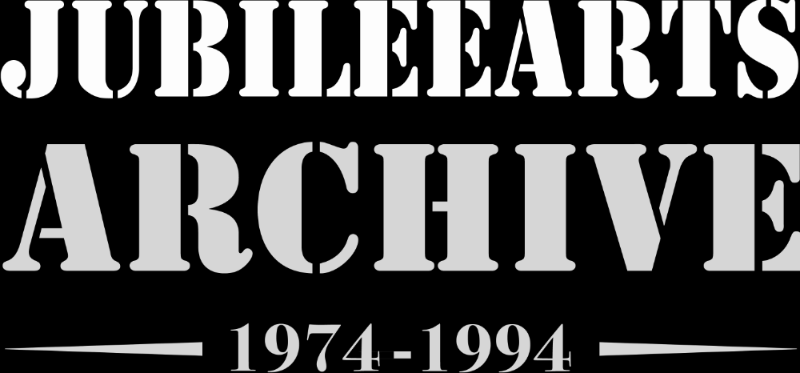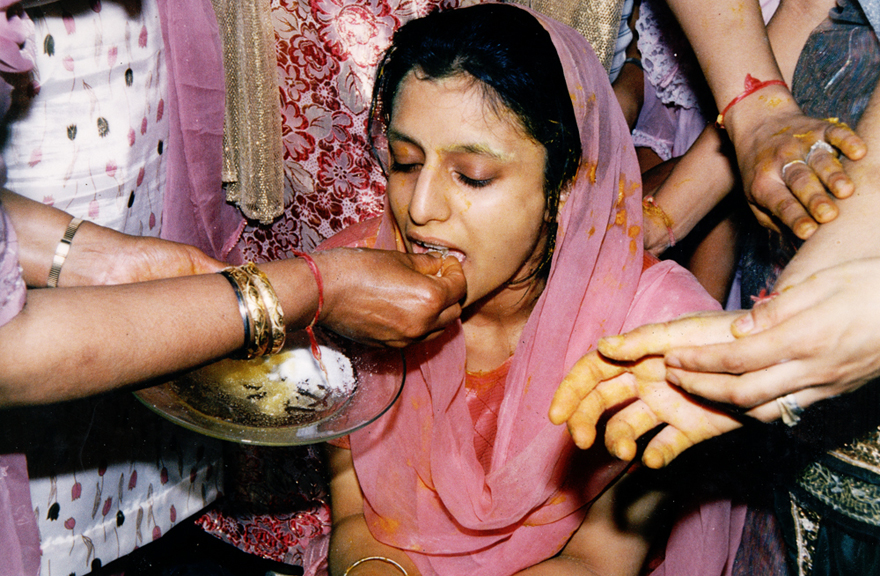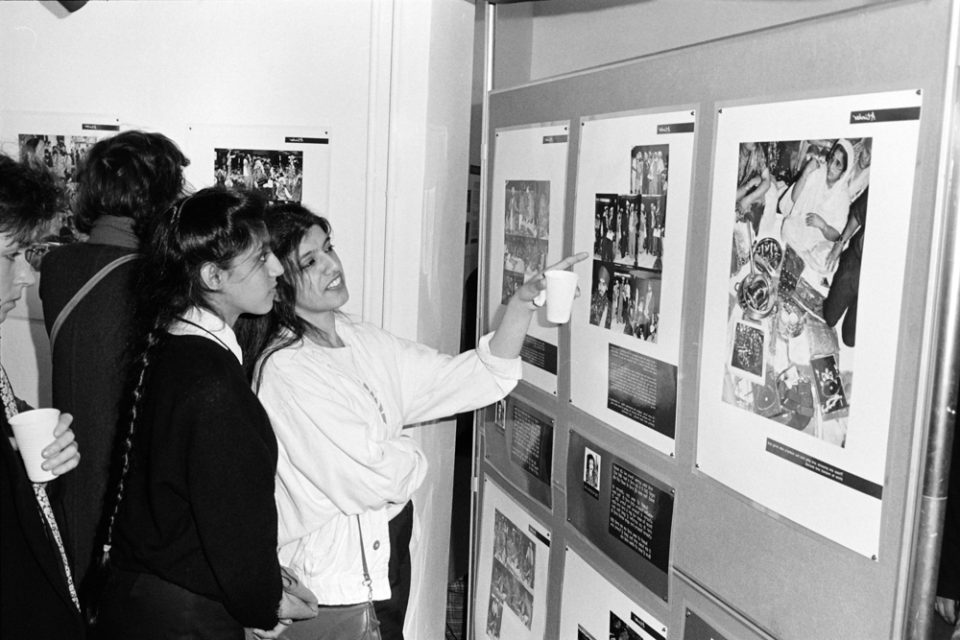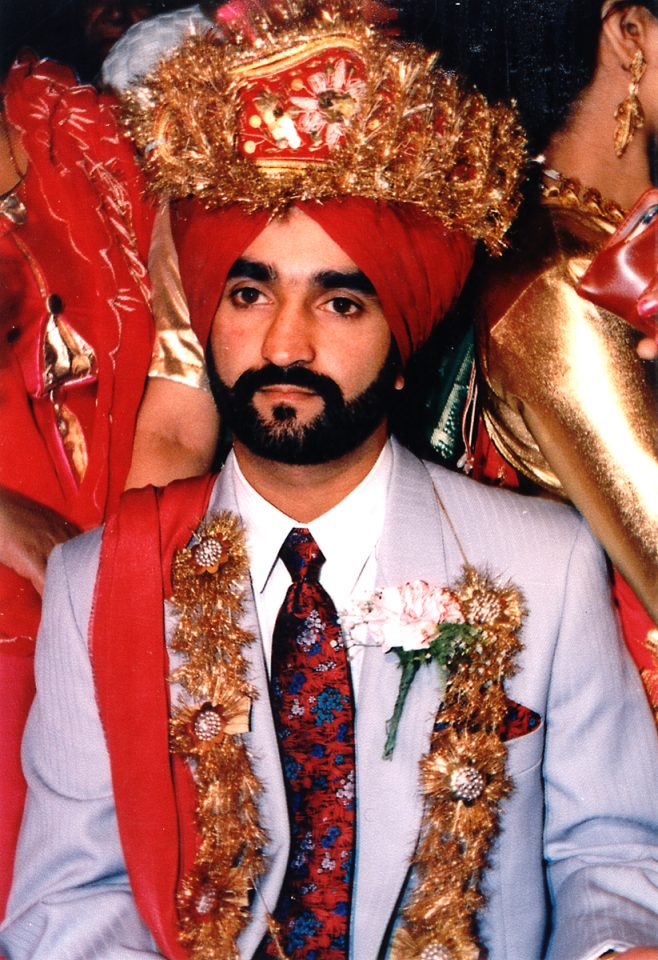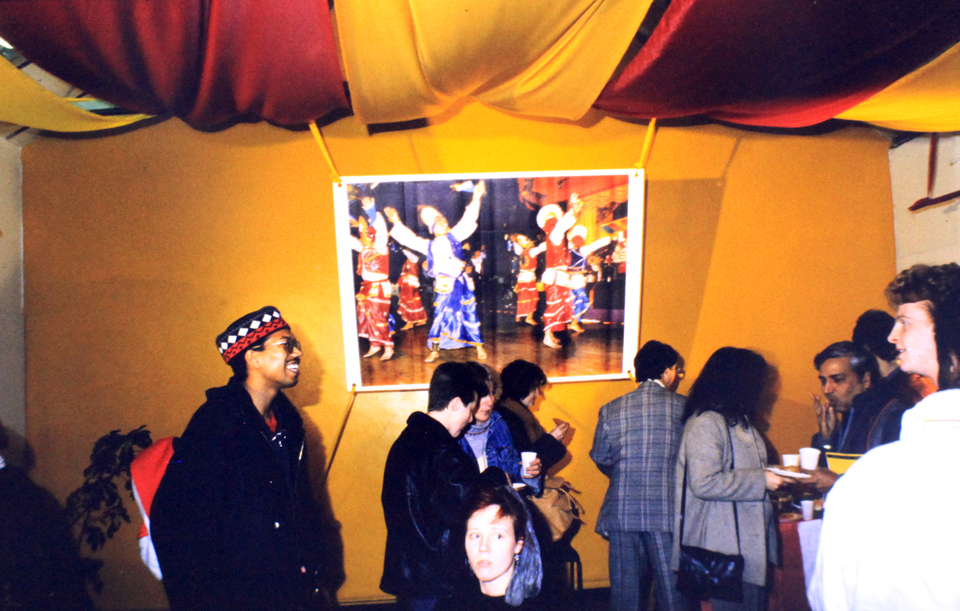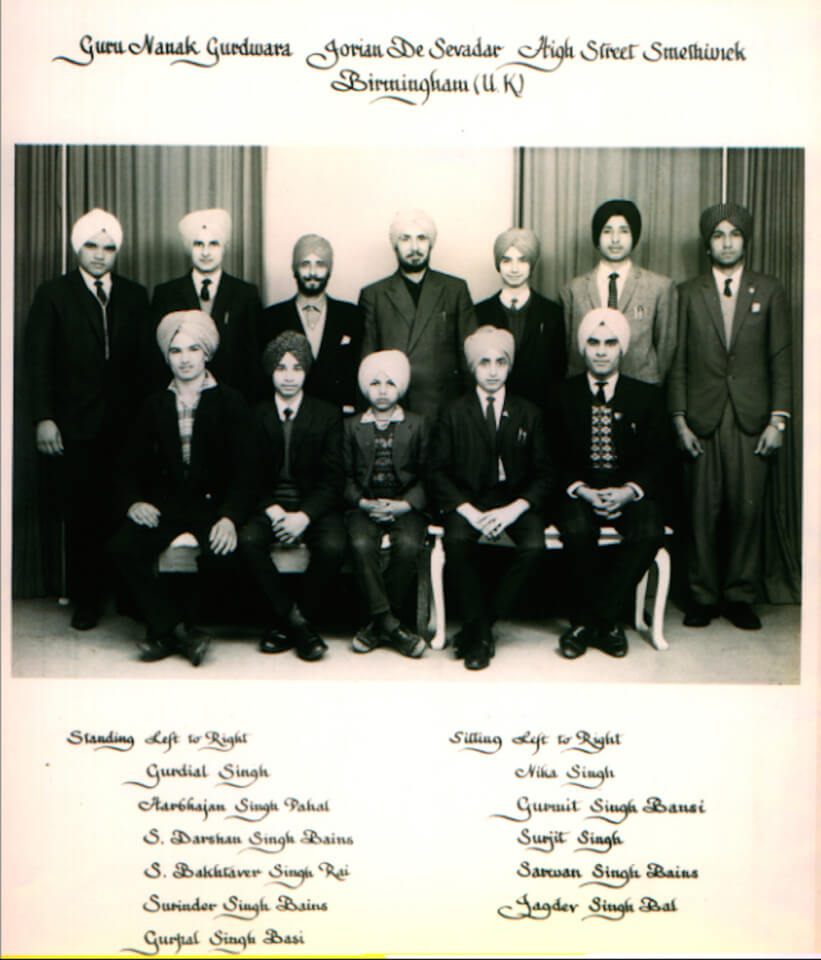Narinder Gill recalls: “This photograph transports me back instantly into a moment of time where I was the person sitting and experiencing a mix of emotions before my own wedding day. It also takes me back to the wonderful memories associated with living and working in the Black Country – the richness of diversity celebrated.
Growing up as a migrant Sikh in the Midlands I thought I understood the significance of a lot of the traditions my culture followed. However, I am not sure now that I really understood what was going on and what these rituals meant. Symbolic rituals blindly followed as you get caught up with the significant moments created through culture and traditions.
This photograph would have been taken during the Maiyan; these are the days before the wedding whereby Vatna, scented powder – flour, turmeric and mustard oil, is applied to parts of your body – a ritual cleanse is how I saw it!
I think for me, reflecting upon all the Maiyan I have attended, watching on from a very early age to my own day, they represent a significant moment in the wedding preparations. I can hear the celebratory voices of women singing, the joyful atmosphere, busy but colourful and playful. I can feel the connections with family and friends and I believe there are glimpses of those intimate moments seen in the photograph – ‘let me sweeten your mouth’. Could this be representing the last time she will be fed by the family home? Is there also a deepened sadness as she gazes down, capturing a quiet moment amidst all the noise whereby she is reminded that she will be letting go of the family home to begin her new life.”
Narinder Gill was part of a five-year primary schools enhancement programme in Sandwell called Quality Start. She has been a head teacher, and is a coach supporting school leaders and leadership teams.
The image is from ‘The Wedding Day’, an exhibition of photographs and text, which took a look behind the scenes of two Sikh weddings, telling the story of the celebration through the experience of two participants, the groom from one wedding and the bride from the other. The photographs were taken by Paramjit Aujla Singh. The selection of images for the show and the accompanying text (from tape recorded interviews) was made in collaboration with the four participating families. The final exhibition consisted of 26 A2 laminated panels, which incorporated text. Additional text in Punjabi was featured on smaller panels. As part of its original installation at Jubilee, there was an accompanying contextual display about the Punjab made with a local Sikh Temple. The exhibition toured around the Black Country.
Many Sikhs stayed in the UK after serving as British Empire soldiers in the First World War. After the Second World War, this was also the case, demobbed Punjabis often being recruited to work in local foundries. In time their families joined them and other migrants from their ancestral villages 8,000 miles away. Until the Commonwealth Immigrants Act of 1962, all citizens of the Commonwealth could enter and stay in the UK without restriction. By 1960, nearly 40 per cent of all junior doctors in the NHS were recruited from the Indian subcontinent. In 1961, the Sikh community in Smethwick bought the old Congregational chapel on the High Street and converted it into a temple, the Guru Nanak Gurdwara. Today, with much rebuilding and extensions, at some 78,000 square feet it is said to be the largest Sikh temple in Europe. Sandwell Archives are right next door.
